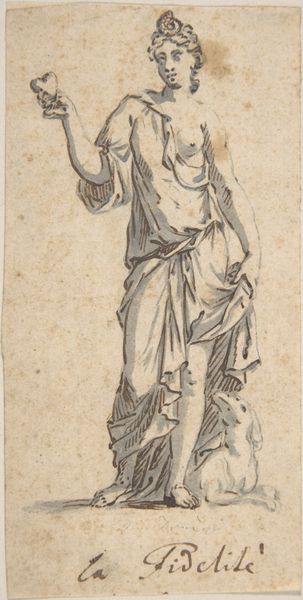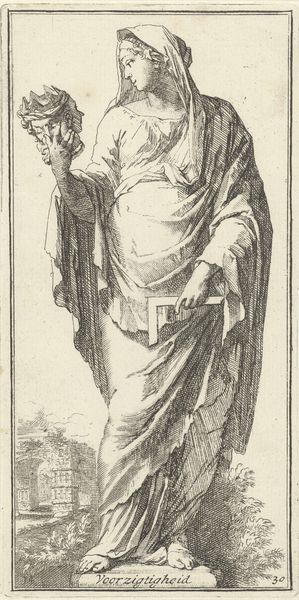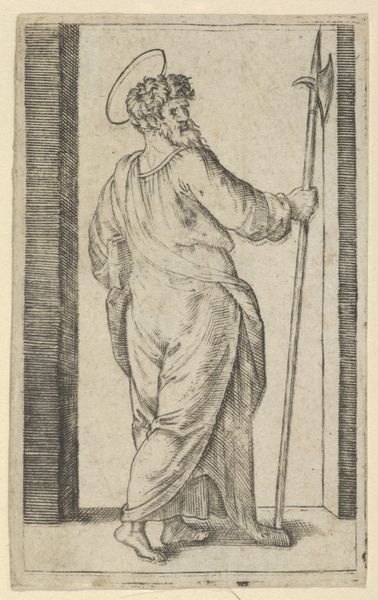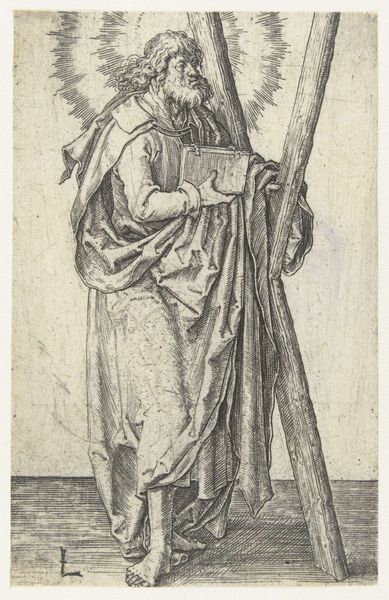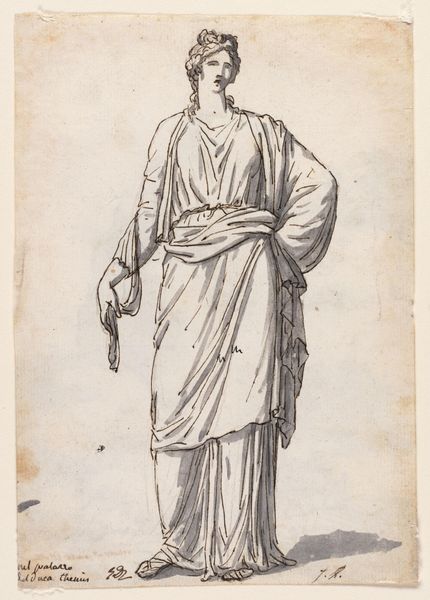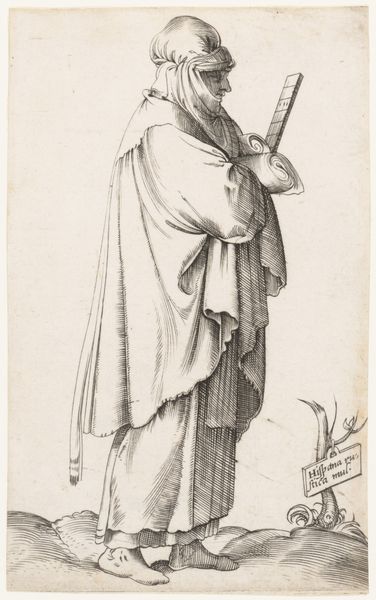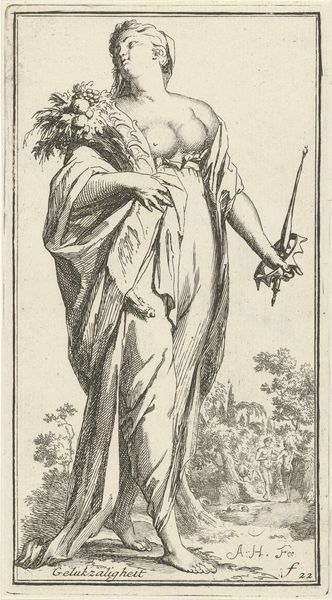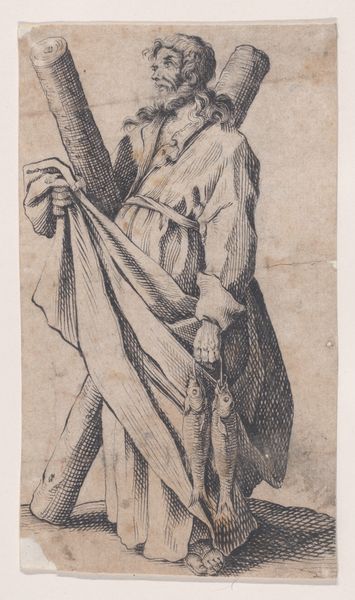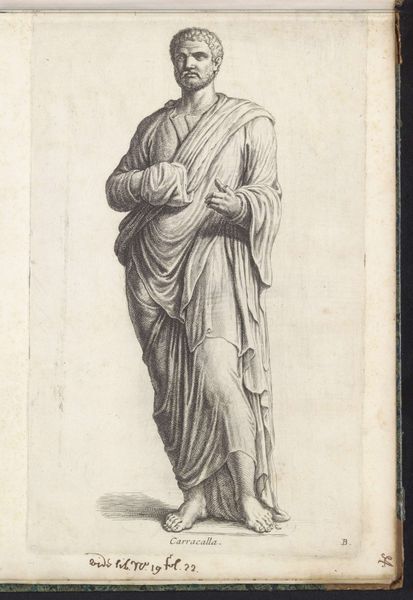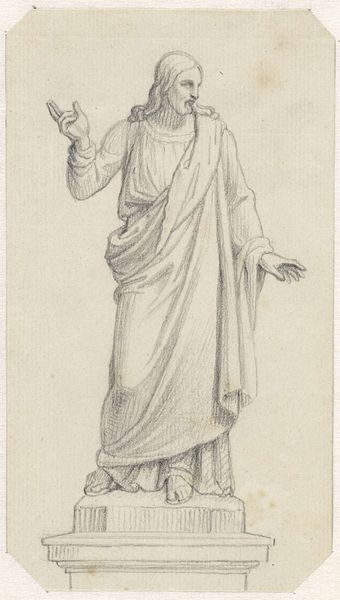
drawing, print
#
drawing
#
toned paper
#
light pencil work
# print
#
pencil sketch
#
personal sketchbook
#
ink drawing experimentation
#
pen-ink sketch
#
men
#
sketchbook drawing
#
pencil work
#
sketchbook art
#
fantasy sketch
Dimensions: sheet: 16 1/8 x 21 3/4 in. (41 x 55.2 cm) plate: 13 7/8 x 8 3/8 in. (35.3 x 21.2 cm)
Copyright: Public Domain
Curator: Well, hello there! I’m just swept away by this ethereal figure in Carlo Maratti's "Dancing Figure," created sometime between 1625 and 1713. It's like a wisp of a dream captured in ink. Editor: My first thought? She's floating. The linework gives her movement, and the pose… she feels almost unbound by gravity, definitely evoking Baroque ideals. Curator: Precisely! It has all the lightness of a summer breeze. The figure is holding, or rather offering, these beautiful wreaths – could be laurel, could be something more symbolic? There's an element of joyful abandon that's infectious, you know? Editor: Absolutely. Think about it: the wreaths she’s holding can allude to victory and status in this very European vision of power and divinity, a sort of self-coronation that perhaps obscures her deeper motivations as a historical personage. But how do we view victory differently today when we focus on collective power and mutual support? Curator: It makes me wonder what was Maratti really imagining in his studio. Perhaps a mythological nymph? Or an allegorical figure of, oh I don’t know, grace? This artwork seems incredibly free spirited; I almost imagine her leaping off the page. Editor: Considering it's rendered with such delicate pen and ink, it also hints at the era's artistic constraints. While her dancing implies freedom, think about how class and gender affected movement then and what performative constraints governed even how upper class women like her walked. She wasn't really "free," in our modern understanding of that word. Curator: It's an interesting idea, that contrast. Light and carefree as it seems on the surface, perhaps there's a complex narrative interwoven within those lines. The material’s modesty works surprisingly well; the drawing is spare, economical even. It is such that it emphasizes movement and lightness. Editor: That modesty is deceptive. It masks how artistic representations reinforce and disseminate historical power dynamics, dictating everything from aesthetic standards to broader ideas around agency. We cannot let those be masked if we want to understand how the artwork fits into a complicated picture. Curator: Indeed. I come away appreciating this piece for how it marries seemingly opposed elements - delicacy and boldness, simplicity and profundity – I like how the artist uses toned paper too, like aged parchment that hints at secrets… I think Maratti really nailed it. Editor: For me, it is the historical tensions embodied within that lightness which leaves me still pondering, thinking… that’s the thing I will carry forth with me as I head toward the next artwork!
Comments
No comments
Be the first to comment and join the conversation on the ultimate creative platform.



